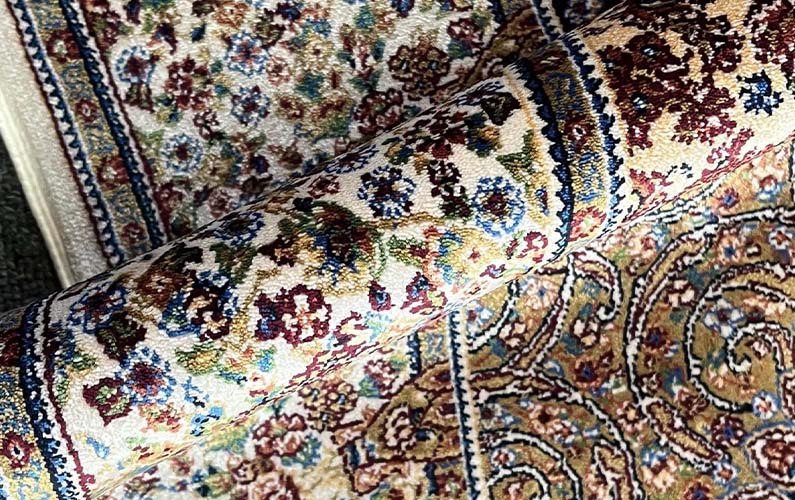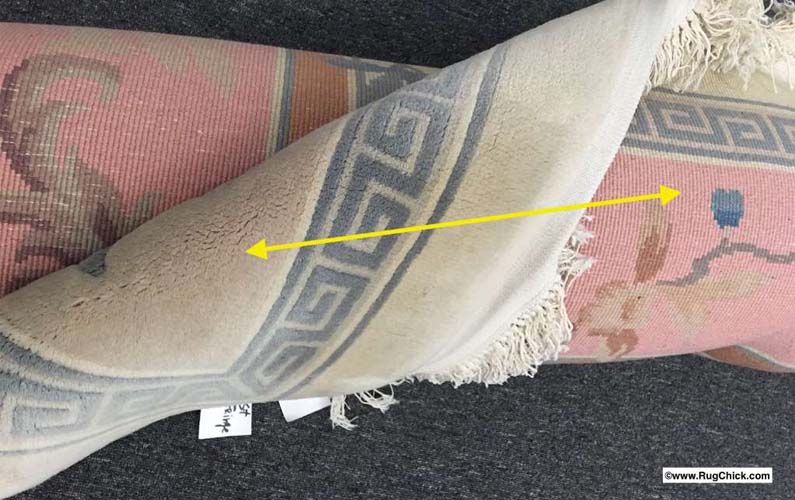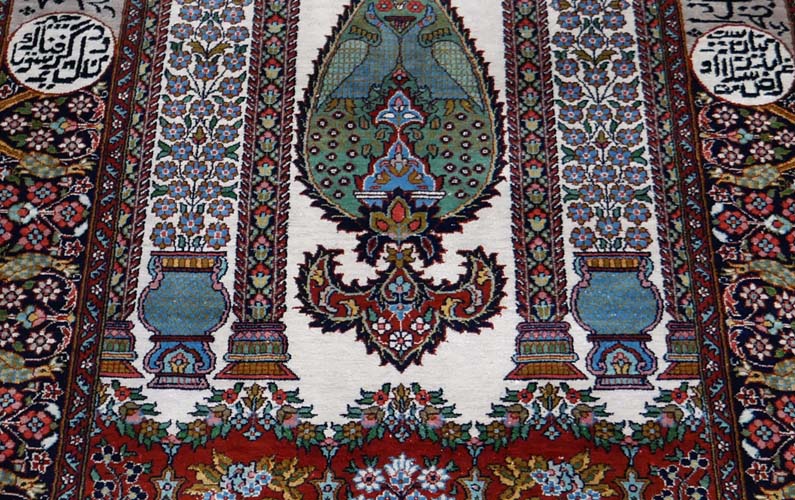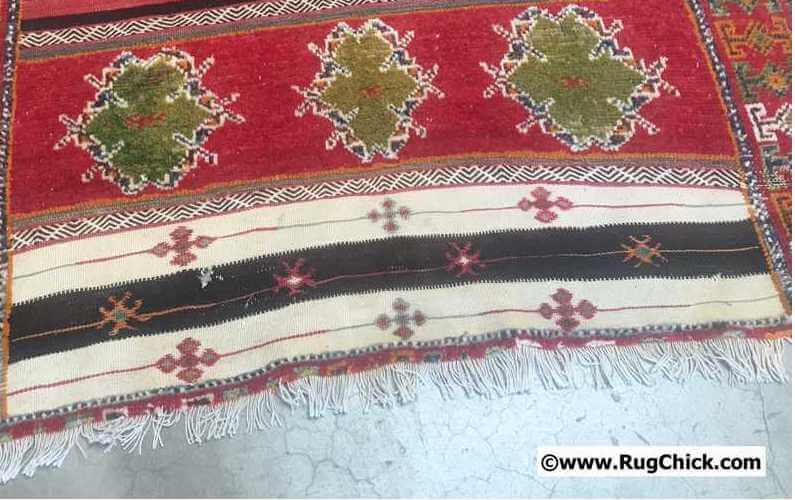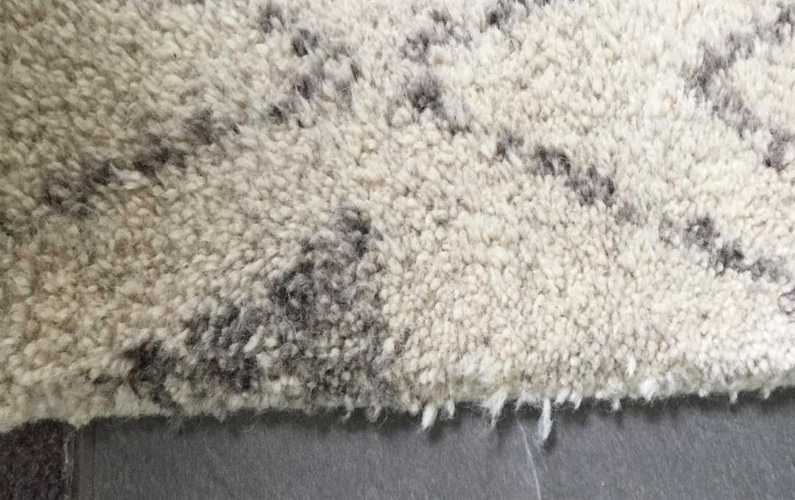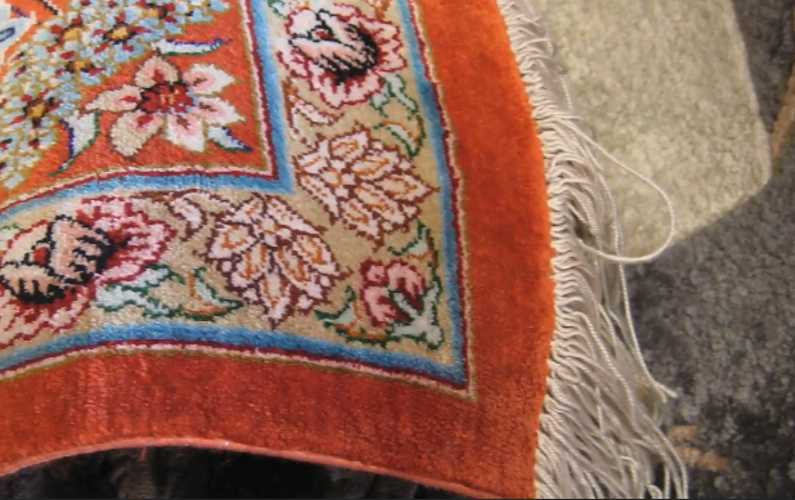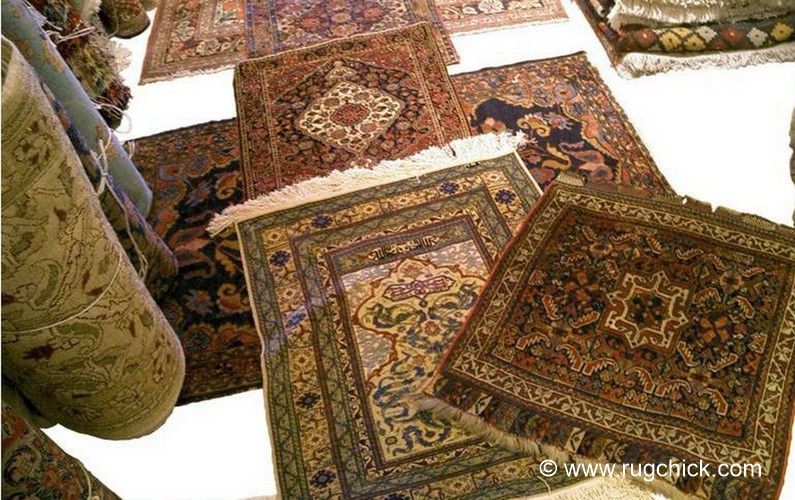Tea and Rugs – A Good Mix?
There’s a rug phenomenum out there called “tea-washed.”
It’s not really TEA – but a brown over-dye that is applied to a rug after it’s woven in order to do several things: make it look older, mute the colors to give it a softer look, and also sometimes to HIDE flaws. I wrote about this in the blog That Rugs Lies!
Tea-washed can be called also Henna-washed and Antiqued.
Take a look at this rug, with a light application, but you can see it in the fringe tassels:
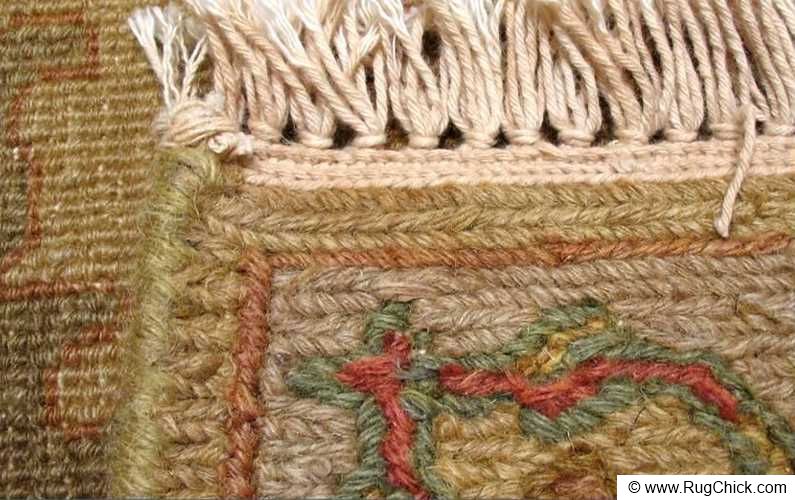
The fringe used to be white, as you can see on the tips of the tassels.
The “tea wash” application is applied by dipping the rug, or spraying it over the rug. And as with everything in life, sometimes work is done VERY well with the best grade materials, and sometimes it is done VERY poorly.
The tea wash dye application is not permanent. And it will wash out depending on that quality of application.
Where you see the most visible loss of the over-dye of that brown dye is on the fringe. You begin to see the original white of the tassels peek out. And in the field of the rug a cleaning can make it a bit more blotchier as the over-dye washes out (and can do so even with the gentlest of cleanings – but if you ever make the wrong choice to steam clean a wool rug in the home, which you should never do of course on any wool rug, you will see that loss of dye even more significantly).
Let’s say though, you give it a gentle proper cleaning – using cool to warm water, a vinegar mixture to stabilize the dyes during cleaning, a mild neutral pH shampoo for the wash, and a thorough rinsing. Let’s say you do everything properly … you will still see a loss of this tea wash. Not as severe as if the rug were cleaned in the home rather than in a rug cleaning plant – but still, a loss nevertheless.
And sometimes this tea wash application is a cover-up for a problem, such as pre-existing dye bleed in a rug:
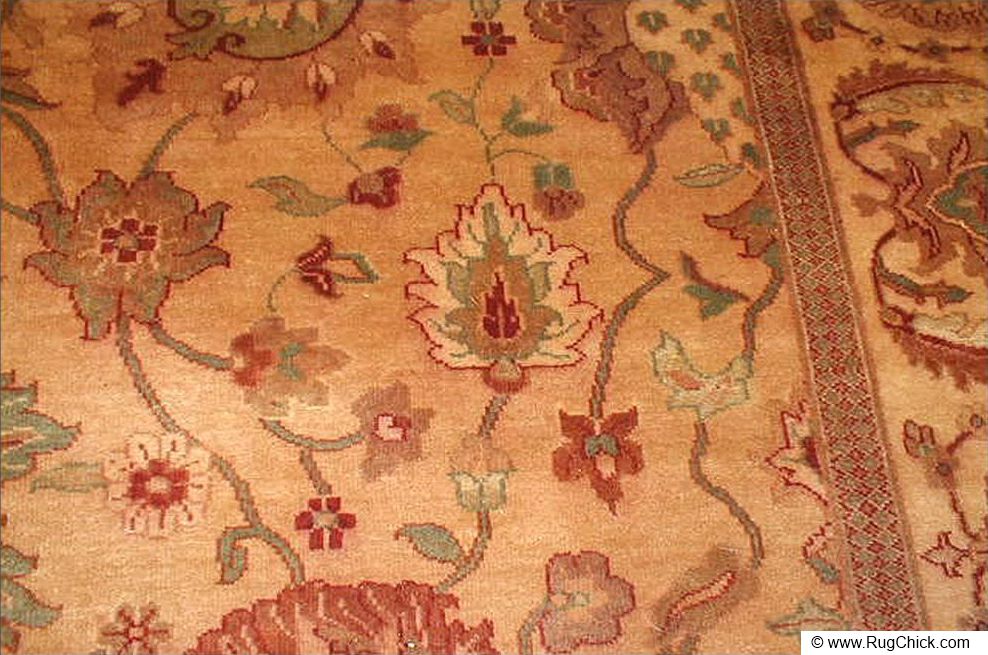
Reds in rug have bled and “tea wash” used to hide this to buyers.
If you buy a tea washed rug for the “look” of it, this is fine. You just need to know if it is a GOOD application of the over-dye process. A sign of a BAD application would be: 1) very blotchy fringes; 2) brown dye that comes off on to towel during a dye test with hot water; and 3) the worst, if dye comes onto a DRY towel when you wipe the rug – this is known as crocking and means ANY amount of moisture will make that dye leave the rug fibers.
However, if the application seems solid, then you simply need to know that over time this over-dye application will lighten up, and may make the rug appear to be more blotchy over time. In most cases the difference is only something a trained rug cleaning eye will notice.
So – if you see a rug that has beige or gold or brown fringe – you need to investigate a little closer:
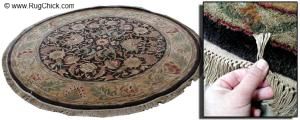
Inspect the rug thoroughly whether you are cleaning or buying the rug.
If you are BUYING the tea washed rug – test the dyes and closely look at the designs (front and back) for damage the over-dye of brown may be covering up. You want to make sure you are not buying damaged merchandise, or a rug that may release dye onto socks or onto flooring underneath it.
If you are CLEANING the tea washed rug – test the dyes, and also inspect that rug closely front and back for pre-existing damage. You want to let the rug’s owner know that “tea wash” applications are not permanent, and that you will wash gently so to not remove a great deal of the application. (If the rug has had pet accidents – this is the worst thing to happen to a rug in terms of “spills” so they need to know that urine will likely remove this “tea wash” more significantly in those affected areas.)
Many tea wash applications are very attractive looking – just know what you are buying or cleaning – and you will be able to keep the rug looking great for a long time.
– Lisa

